As most Western governments are on the path of the energy transition, technology that saves or reduces energy consumption is just as important. I don't agree with how governments here in North America are proceeding with the transition as they are putting that first ahead of energy security. I am afraid their policies will cause an energy shortage, but in that case, companies that can help save energy will be even more attractive.
After adjusting for inflation, costs for major U.S. utilities to produce electricity rose 6% in 2021 as a result of rising fuel costs. For a number of years, electricity production costs had declined as natural gas prices fell and new low-cost renewable generators came online.
The cost to deliver electricity across transmission and distribution lines increased by 12% in 2020 and remained steady in 2021. The latest data I found, according to choseenergy.com, electricity prices were up 11.2% in the U.S. from November 2021 to November 2022.
Many people do not realize that electricity demand is around twice as high during the day (work hours) compared to at night, so natural gas power plants are used as the swing producer because they are the easiest to turn on and off.
The summer demand has been increasing. The average monthly capacity factor for simple-cycle, natural gas turbine (SCGT) power plants in the United States has grown annually since 2020. Average capacity factors surpassed 20% for two consecutive summer months in 2022 — the first time on record — to meet peak electricity demand, based on data from our Electric Power Monthly.
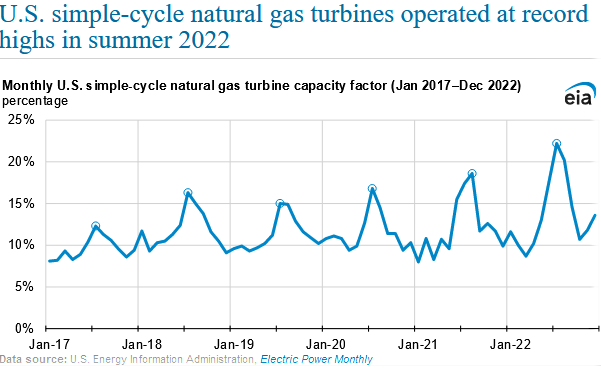
With rising electricity demand for going green and charging EVs, along with higher electricity prices, companies that have the technology to save electricity will be in big demand.
I have mentioned many times about junior tech companies that have the best technology are great but you need great salespeople too or some kind of sales advantage or angle. For example, my last tech pick, Clip Money already have the customer base from their last endeavor into ATMs. I believe Airtest has great technology to save on electricity costs, but they were lacking on the sales side until now.
Airtest
Lorne Stewart took over control as President of ATI AirTest Technologies Inc. (AAT:TSX.V; AATGF:OTC) at the start of the year. He has been employed for the last four years as a sales representative and more recently sales manager for Camfil Canada.
Camfill is a 60-year-old air filtration company so a very similar industry to Airtest being basically air quality and measurement. He has continually exceeded sales targets, growing his sales territory by 400% during the last four years. This has given him an opportunity to understand the industry and the potential that exists for Airtest. I believe that this addition to the Airtest team is a significant step toward strategic growth.
Mr. Stewart commented: "Airtest has generated business over the last 20 years with over 1,600 customers. This existing base of customers represents a database that can be introduced to the company's latest offerings with tremendous potential. In addition to this existing database of clients, a large number of prospective customers are also reaching out to the company driven by our quality, value proposition, and industry expertise. I'm looking forward to leading Airtest to significant sales growth and profitability."
Proven Technology with big savings:
-
Airtest CO2 transmitters installed in 600 Lowes stores. Installation was 100% funded by rebates from energy and payback was less than two years:
-
1,140 Shoppers Drug Mart stores retrofitted resulted in an 18% total energy reduction with a payback of fewer than two years:
-
Installed 65 Canadian Tire stores in Ontario Canada. Delivered over CA$240,000 in natural gas savings alone and payback less than two years:
-
Installed 12 new IKEA stores with a greater than 50% reduction in ventilation costs and payback of less than two years.
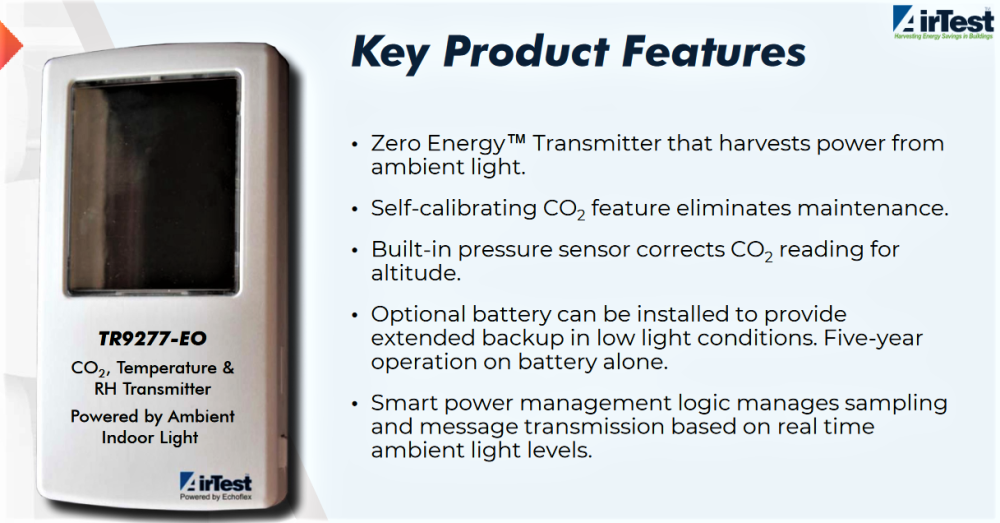
Basically, by measuring CO2 levels, ventilation can be provided as needed.
You don't need much ventilation at night if a store is empty and closed. This saves on the amount of air you have to heat or cool. This data from a grocery store shows a good graphic picture.
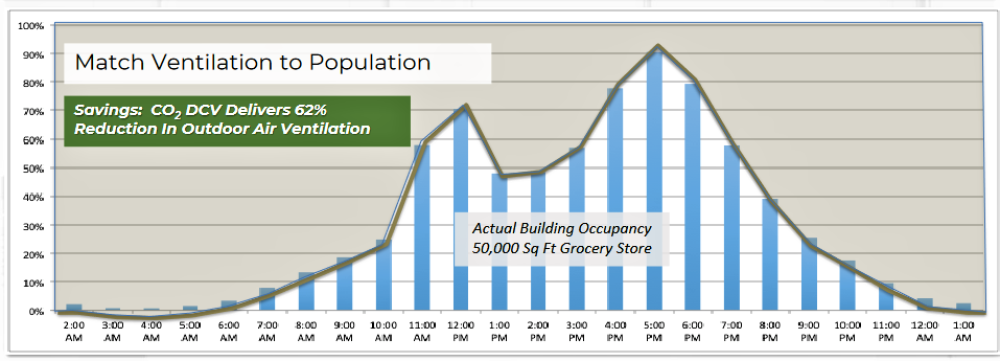
Building codes require fresh air ventilation in all public buildings based on maximum possible occupancy. There has not been much in the way of controlling these units, they just run at maximum. Previously it has been too expensive to hard wire in CO2 sensors, but Airtest breaks this cost barrier with wireless sensors.
The market is huge with around 20 million Roof Top Units for heating and cooling with about 80% of them not measuring CO2. Companies need to reduce operating costs and carbon emissions. Airtest's next target market is grocery stores and retail store chains.
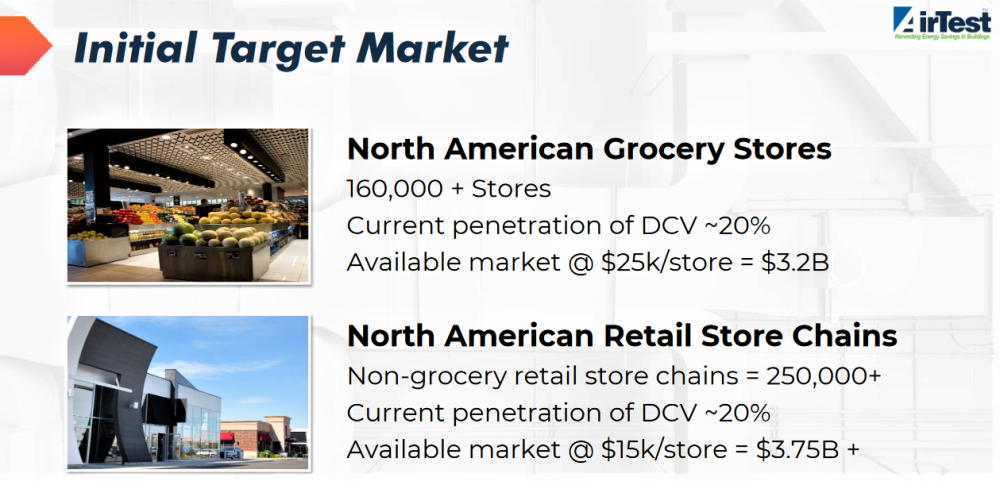
In the first three quarters of 2022, sales were just over US$1.8 million and you can see from above, the potential is in the billions. It should not be too difficult to get into the tens of millions run rate.
On March 1st Airtest announced that their IAQEye demand control ventilation (DCV) solution has been approved by Save On Energy for a 50% subsidy.
The DCV solution is intended to be installed at numerous shopping malls in Ontario. This will bring the cost break-even point down to about one year. Airtest has also submitted its technology to Alternative Energy Systems Consulting (AESC) to evaluate with the goal to garner incentives or rebates in California.
It seems the stars just recently aligned for Airtest.
-
Rising electricity demand in the push to green and electrification:
-
Rising electricity prices with that strong demand:
-
ESG means companies need to reduce costs and carbon emissions:
-
Airtest beginning to qualify for 50% subsidies:
-
New leadership with stronger sales background:
-
And for investors, a low entry-level stock price.
This is just a small company with 223 million shares out and CA$0.03 has a valuation of just CA$6.7 million. It is a stock you can throw a few 1000 at.
On the chart, it looks like a bottom is in and is breaking out above the downtrend channel. A close above the 200-day MA would be confirmation. I see resistance levels around CA$0.06 and CA$0.12.
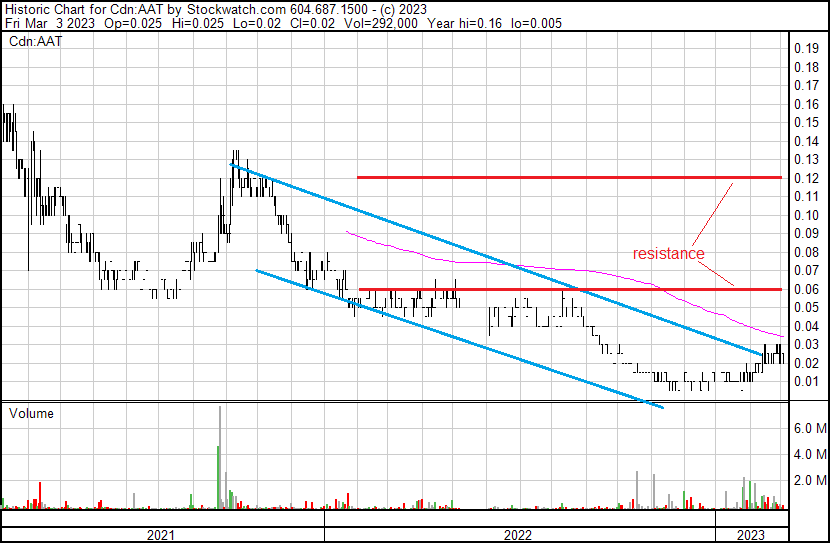
Cost of Electric Vehicles
Very few realize the high cost and the amount of electricity needed to charge EVs. I saw articles that point out it is more expensive to charge these than comparable gas-powered cars, so I did my own analysis and it is true.
I used the EPA ratings on these cars. Plus you will pay a higher price for the Tesla and I did not include the cost of a Level 2 charger, so the charging cost is at charging stations. I used US$3 per gallon of gasoline as that is about the current going rate where I am in Florida.
Summer Winter:
Tesla Model 3 — 11.2 cents/mile 15.8 cents/mile
BMW 3 Series (gas) —10.4 cents/mile 10.4 cents/mile
Jaguar XE (gas) — 10.4 cents/mile 10.4 cents/mile
Cheap charging EVs at home is a myth but is the cheapest option if practical. Meaning you only drive once or twice a week and/or short distances. However, it would take several days to charge your EV so realistically you have to install a Level 2 charger in your garage.
The cost isn’t cheap — about US$2,000 for parts and installation is a reasonable ballpark figure. Moving up to Level 2 means you’ll cut your charging time considerably. Many new electric cars can take up to 12 hours to charge using a Level 2 outlet because they have bigger battery packs.
The average price to charge a 60-kilowatt-hour Tesla Model 3 at home is US$6.83, while it's US$8.88 for Volvo XC40 Recharge with a 78-kWh battery pack and US$14.92 for a Ford F-150 Lightning with its larger 131 kWh battery.
The big catch is that's based on an average per-kWh cost of just over US$0.11. A huge issue is most utility companies charge for delivery, transmission, line loss, regulatory fee, debt reduction, and taxes, etc.
In Ontario where I live, you pay about Canadian 8.2 cents during off-peak at night and 17 cents during peak. So pick an average of 12 cents, but the additional charges add another 8 cents or so, and we are up at 20 cents plus 13% tax and we are up to Cdn22.6 cents/k-Wh.
California is popular for EVs and the EIA reports electricity prices of 24.46 cents/k-WH there.
High-speed charging at Electrify America, meanwhile, costs something on the order of US$0.41 per kWh. Some Tesla Superchargers are charging as much as US$0.50 per kWh. That would mean your US$6.83 at-home Tesla Model 3 charge would instead cost US$30, while that US$14.92 Lightning fill-up jumps to US$53.71.
Unlike a typical 240-volt Level 2 home charger system, you will find Level 3 chargers in commercial settings because they’re prohibitively expensive for a private individual to get installed at home. Depending on an electric vehicle’s charging source and battery capacity, some drivers can charge their cars to 80% in as little as 15 to 30 minutes using a Level 3 fast charger.
The Devil Is in the Details
If you're going to be a heavy user of 240-volt public charging stations, pay attention to the speed of the onboard charger for any EV you're considering. How much you'll pay at a public charging station depends on it. This is because charge stations often make you pay by the hour.
So a car with a slow onboard charger will cost more to fill than one with a fast one. The differences can be huge: A base 2017 Nissan Leaf with the then-standard 3.3-kW onboard charger takes twice as long to charge, and twice as much electricity to fill, than a 2018 or later Nissan Leaf with the 6.6-kW onboard charger. Thankfully, many EVs now come standard with a 6.6-kW or a 7.2-kW charger.
The Tesla Model 3 is rated for 267 miles of range on a single charge. Of that, 175 miles can be restored in 15 minutes by plugging into the company's Supercharger network. Based on the US$30 cost of a supercharger for a full charge and 267-mile range, that is 11.2 cents per mile.
Remember you will not get the full range because, in reality, you are not going to run your battery down to zero. Charging stations are not as plentiful as gas stations. However to compare we assume using a full charge to a full tank of gas.
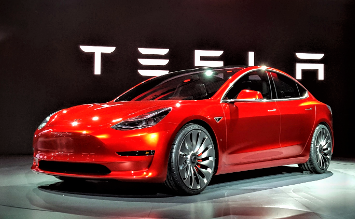
These EVs are really not practical in Canada and the northern U.S. states for about half the year.
It is called winter. Battery performance degrades in cold weather and your batteries also have to power the cabin heater and windshield defroster.
An AAA study found range can be reduced by 41% on average when the temperature drops from 75 degrees Fahrenheit to 20 degrees and the climate control system is used to heat the cabin.
Car.com did a road test with a Tesla model Y and the range dropped over 50% at 0 to 5 degrees Fahrenheit.
I also note a drop in hot weather which they did not comment on so I assume it is the air conditioner.
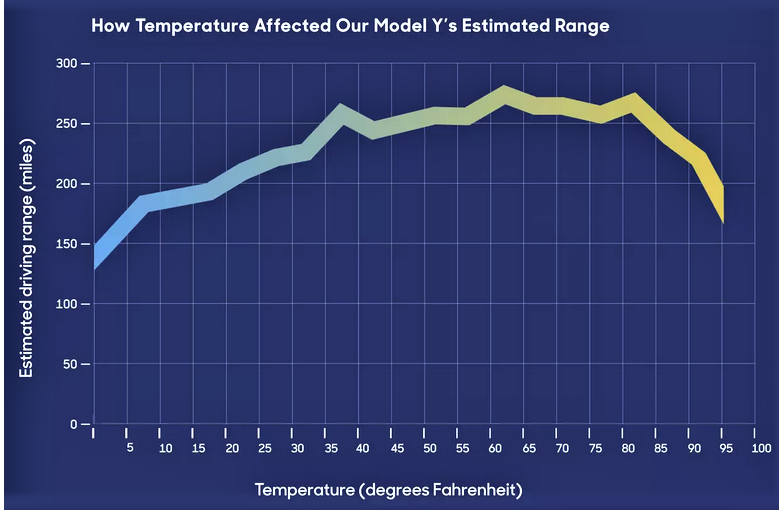

The BMW 3 Series has been one of the best go-to small, luxury sport sedans for over 40 years.
With a starting price of around US$44,000, the BMW 3 Series is not only cheaper than most of its gasoline competition, but it's also cheaper than the Tesla Model 3 (US$55,000) too, not counting tax incentives.
EPA rates it at 29 mpg with the 15.6-gallon tank.
So a 452-mile range and gas at US$3/gallon would be US$46.80 = 10.4 cents per mile.
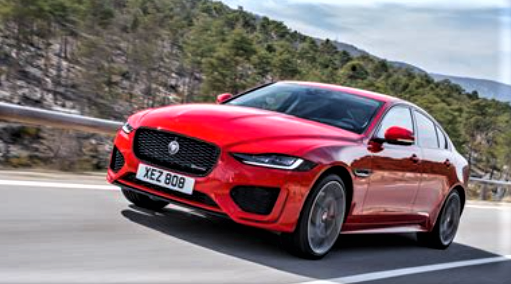
The 2020 Jaguar XE (US$30,500) borrows its looks from the more expensive side of its brand's lineup.
Because that brand is Jaguar, the XE looks very, very good.
What's also impressive with the XE is that its all-wheel-drive system is able to send a 10:90 split to the front:rear wheels, the other way around with a 90:10 split front:rear, and 50:50 for optimal traction when you're really stuck.
EPA rates it at 29 mpg (25 city, 34 Hwy) and has a 16.6-gallon fuel tank. So a 481-mile range and gas at US$3/gallon would be US$49.80 = 10.4 cents per mile.
Conclusion
I did not analyze other cars and there are many similar and many with much better gas mileage. On average Americans drive around 14,000 miles per year. That BMW 3 Series would cost the average driver US$1,456 per year at US$3.00 gas, so less than your US$2,000 Level 2 charger.
In essence, you drive for free in your first year with your fossil fuel burner. Also, keep in mind your EV is really a 50% coal burner because almost 50% of electrical generation in the U.S. is from coal.
However, if you do not drive a lot and can charge your EV at home you can drive an EV much cheaper. Another big factor is where you live and what electricity prices are. Governments are historically incompetent and they will screw up this energy transformation, likely leading to much higher electricity prices.
| Want to be the first to know about interesting Technology investment ideas? Sign up to receive the FREE Streetwise Reports' newsletter. | Subscribe |
Struthers Stock Report Disclaimers:
All forecasts and recommendations are based on opinion. Markets change direction with consensus beliefs, which may change at any time and without notice. The author/publisher of this publication has taken every precaution to provide the most accurate information possible. The information & data were obtained from sources believed to be reliable, but because the information & data source are beyond the author's control, no representation or guarantee is made that it is complete or accurate.
The reader accepts information on the condition that errors or omissions shall not be made the basis for any claim, demand or cause for action. Because of the ever-changing nature of information & statistics the author/publisher strongly encourages the reader to communicate directly with the company and/or with their personal investment adviser to obtain up to date information.
Past results are not necessarily indicative of future results. Any statements non-factual in nature constitute only current opinions, which are subject to change. The author/publisher may or may not have a position in the securities and/or options relating thereto, & may make purchases and/or sales of these securities relating thereto from time to time in the open market or otherwise. Neither the information, nor opinions expressed, shall be construed as a solicitation to buy or sell any stock, futures or options contract mentioned herein. The author/publisher of this letter is not a qualified financial adviser & is not acting as such in this publication.
Disclosures:
Charts and images provided by the author.
1) Ron Struthers: I, or members of my immediate household or family, own shares of the following companies mentioned in this article: ATI AirTest Technologies Inc. I personally am, or members of my immediate household or family are, paid by the following companies mentioned in this article: None. My company currently has a financial relationship with the following companies mentioned in this article: None.
I determined which companies would be included in this article based on my research and understanding of the sector.
2) The following companies mentioned in this article are billboard sponsors of Streetwise Reports: None. Click here for important disclosures about sponsor fees. The information provided above is for informational purposes only and is not a recommendation to buy or sell any security. As of the date of this article, an affiliate of Streetwise Reports has a consulting relationship with: ATI AirTest Technologies Inc. Please click here for more information. The information provided above is for informational purposes only and is not a recommendation to buy or sell any security.
3) Statements and opinions expressed are the opinions of the author and not of Streetwise Reports or its officers. The author is wholly responsible for the validity of the statements. The author was not paid by Streetwise Reports for this article. Streetwise Reports was not paid by the author to publish or syndicate this article. Streetwise Reports requires contributing authors to disclose any shareholdings in, or economic relationships with, companies that they write about. Streetwise Reports relies upon the authors to accurately provide this information and Streetwise Reports has no means of verifying its accuracy.
4) This article does not constitute investment advice. Each reader is encouraged to consult with his or her individual financial professional and any action a reader takes as a result of information presented here is his or her own responsibility. By opening this page, each reader accepts and agrees to Streetwise Reports' terms of use and full legal disclaimer. This article is not a solicitation for investment. Streetwise Reports does not render general or specific investment advice and the information on Streetwise Reports should not be considered a recommendation to buy or sell any security. Streetwise Reports does not endorse or recommend the business, products, services, or securities of any company mentioned on Streetwise Reports.
5) From time to time, Streetwise Reports LLC and its directors, officers, employees, or members of their families, as well as persons interviewed for articles and interviews on the site, may have a long or short position in the securities mentioned. Directors, officers, employees, or members of their immediate families are prohibited from making purchases and/or sales of those securities in the open market or otherwise from the time of the decision to publish an article until three business days after the publication of the article. The foregoing prohibition does not apply to articles that in substance only restate previously published company releases. As of the date of this article, officers and/or employees of Streetwise Reports LLC (including members of their household) own securities of ATI AirTest Technologies Inc., a company mentioned in this article.


















































